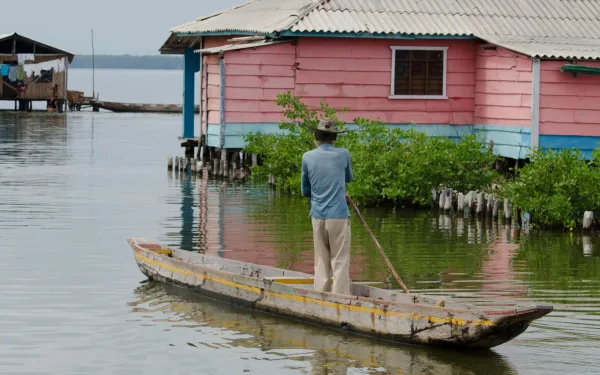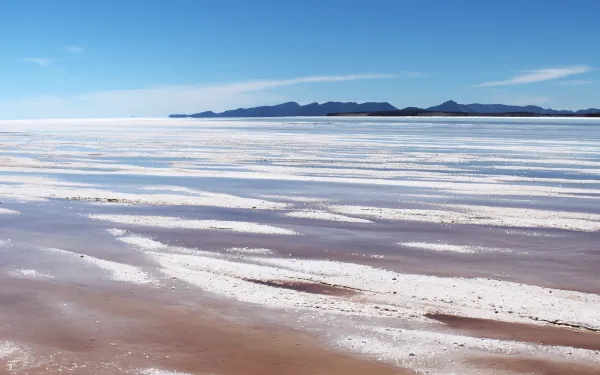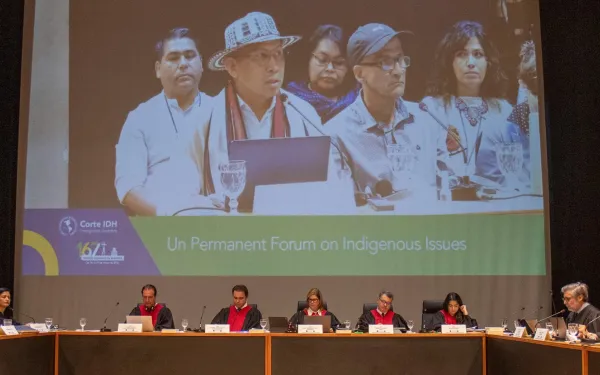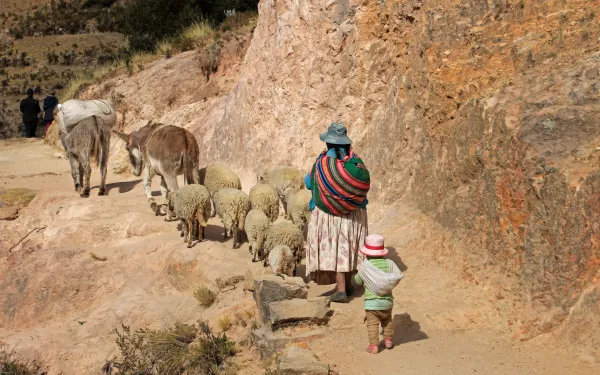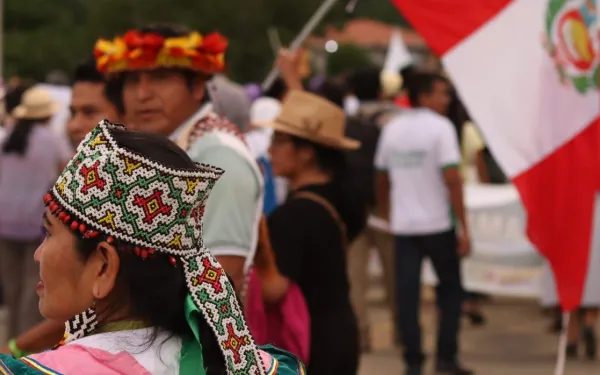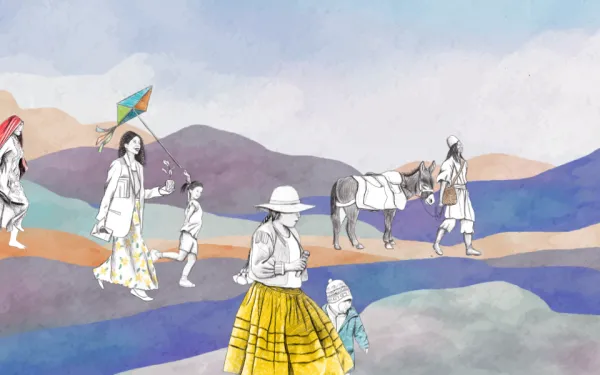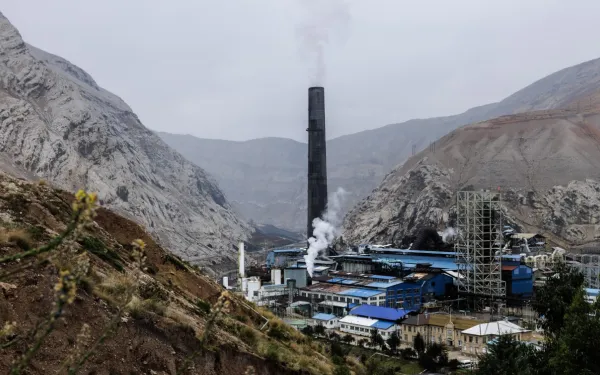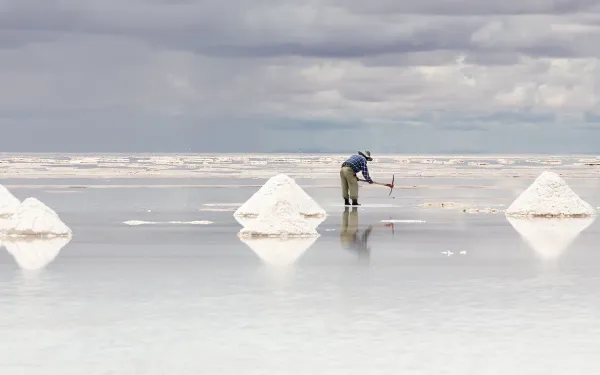
Organizations and communities alert to human rights impacts of mineral extraction for the energy transition
A public hearing before the Inter-American Commission on Human Rights will focus on the impact of the expansion and intensification of extractive operations for transition minerals like lithium and copper on communities in Latin America. Washington DC. On November 15, at a public hearing before the Inter-American Commission on Human Rights, representatives of national and regional organizations, as well as members of communities and indigenous peoples, will present updated information on how the exponential increase in the demand for and extraction of transition minerals has caused serious human rights violations as part of a transition process that is proposed only as a change in the energy matrix and is incapable of addressing inequalities in energy production and consumption, particularly in the Global South.Transition minerals like lithium, copper, cadmium, and cobalt—also called “critical” minerals—have been proposed in many global discussions as one of the main solutions to the climate crisis, as they are used in the development of technologies for the production of renewable energy, thus reducing or replacing the use of fossil fuels. A large part of these minerals are located in Latin America, in areas of great biocultural diversity.At the hearing, participants will present the main threats that mining for energy transition poses to the rights of indigenous peoples and local communities, the right to a healthy environment, access to environmental information, citizen participation, and justice. In addition, concrete cases of human rights violations in the context of mining for energy transition will be presented through testimonies.These impacts are already occurring in countries such as Argentina, Bolivia and Chile, which concentrate about 53 percent of the world's known lithium deposits in their Andean wetlands, extremely fragile ecosystems confronting water scarcity; in Chile and Peru, where 40 percent of the world’s copper is mined; and in the Colombian Amazon, where concessions, mining claims and illegal extraction of transition minerals are violating the rights of indigenous peoples.Several international organizations have spoken out about human rights abuses related to climate crisis response, particularly energy transition processes. In September, the UN Panel on Critical Minerals for Energy Transition issued a set of recommendations and voluntary principles for governments, industry and other stakeholders to ensure equitable, fair and sustainable management of these minerals. These guidelines aim to ensure that the transition to renewable energy is based on fairness and equity, and that it promotes sustainable development, respect for people, and environmental protection in developing countries.The hearing will take place during the 191st period of sessions of the Inter-American Commission. It was requested by the Due Process of Law Foundation (DPLF), the Gaia Amazonas Foundation and the organizations that are members of the the Alliance for Andean Wetlands (Alianza por los Humedales Andinos): the Interamerican Association for Environmental Defense (AIDA), a regional organization; the Fundación Ambiente y Recursos Naturales (FARN) and the PUCARÁ Assembly, of Argentina; the Centro de Documentación e Información Bolivia (CEDIB) and the Colectivo de Derechos Humanos Empodérate, of Bolivia; ONG FIMA, Defensa Ambiental and Fundación Tantí, of Chile.The hearing will be held from 9:00 a.m. to 10:30 a.m. (Washington DC time) and will be broadcast via Zoom, which requires prior registration at the following link: https://www.zoomgov.com/webinar/register/WN_dsEZdrDqSyOA8-i7ikveJQ#/registration. Quotes from representatives of organizations and communities Verónica Chávez, representative of the communities of Salinas Grandes and Laguna de Guayatayoc, Argentina:"All of us who are part of the Salinas Grande watershed are living a situation in which our rights are being affected. We hope that the IACHR can resolve this situation because it is very serious; they are damaging our territories, living beings, and nature itself." Liliana Ávila, director of the Human Rights and Environment Program at the Interamerican Association for Environmental Defense (AIDA):"The energy transition in our countries should be an opportunity to move towards more just and equitable energy production and distribution processes. The human rights framework and the role of the international protection system are fundamental in this regard. It is very important that the Inter-American Commission closely follows this process and promotes the protection of human rights." Verónica Gostissa, attorney with Asamblea Pucará of Catamarca, Argentina:"In our territory, the province of Catamarca, Argentina, we are living a serious violation of our rights, which is reflected first and foremost in the visible environmental impacts. Since 1997, lithium mining has caused significant environmental damage, including the drying up of a branch of the Trapiche River, a damage that persists to this day. Water continues to be taken from this damaged river, despite recognition of the damage by the company and government authorities. Access to public information, participation and consultation, and access to justice are also affected. For years, extractive projects have been approved without adequate procedures, and although a lawsuit filed by the Atacameños del Altiplano indigenous community resulted in a regulation, it does not meet the standards for effective indigenous consultation. In addition, more than 10 lithium projects are being developed in the same territory, the Salar del Hombre Muerto, without any cumulative and comprehensive impact assessment to date." Vivian Lagrava Flores, coordinator of the Colectivo de Derechos Humanos Empodérate, Bolivia:"Indigenous communities reject mining projects, they can even issue their resolutions and say no in the mining consultation process, but their decisions are not binding for governments. International standards are not respected, and the subjugation of territories and the imposition of mining rights are legitimized with discourses of progress and development, but it is not development from the vision of the indigenous peoples, nor from ours." Lady Sandón, representative of the Environment Unit of the Consejo de Pueblos Atacameños, Chile:"There is a lot of ignorance of the law for the native/indigenous people, which favors the state, and that is why the inhabitants of the land, by not knowing, do not enforce their guarantees. The state institutions violate the social, environmental, and cultural aspects; sometimes they use the indigenous people themselves to create divisions and to have supporters or political and mining operators who promote the change of the thinking of the genetic memory that we have as native people. I hope that we can revisit the situation of ancestral indigenous justice as a mechanism that previously established corrections so that the values and principles of ‘Buen Vivir’ are respected." Daniel Cerqueira, program director of the Due Process of Law Foundation (DPLF):"This hearing is an opportunity for the Inter-American Commission to clarify the parameters of action for both States and companies in the management of transition minerals. It is imperative to have specific obligations in this area, as human rights violations resulting from the extraction of these minerals are a reality that tends to worsen in several countries in the region." Juan Sebastian Anaya, advocacy advisor at the Gaia Amazonas Foundation (Colombia):"The indigenous governments of the Amazon exercise their territorial and environmental authority in accordance with the Law of Origin, which guides their knowledge systems and principles of relationship with the elements of the territory, such as minerals. The decarbonization of the energy matrix to maintain consumption standards in the global north should not be done at the expense of indigenous territories and the communities that protect them, govern them and make them flourish with their daily practices."Press contactsVíctor Quintanilla (Mexico), AIDA, [email protected], +52 5570522107Rocío Wischñevsky (Argentina), FARN, [email protected], +54 91159518538 Karen Arita (Mexico), DPLF, [email protected], +52 442 471 9626
Read more

